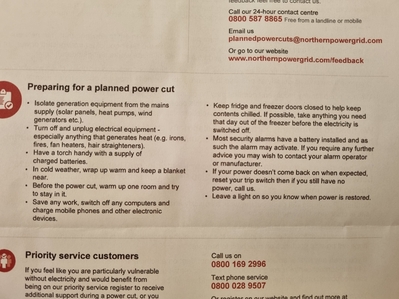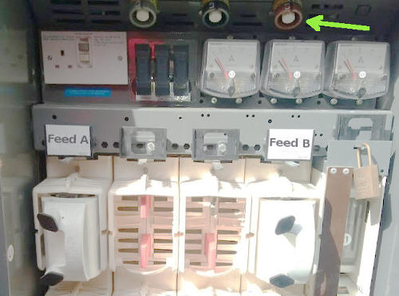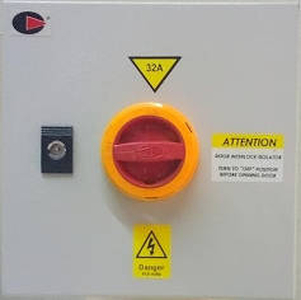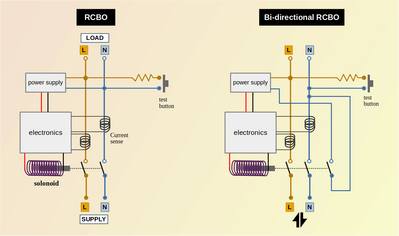Isolating the system for a planned power cut
There is an upcoming planned power cut, see the attached letter that I got from NPG. It will be for about 28 hours whilst they do some work to our local network and we will be put on a generator.
It says to isolate generation equipment (a heat pump is an electrical generator?!?) from the mains supply, but I'm pretty sure that my inverter will do this anyway when it loses mains power. Plus my PV isolators will not physically close when under load, I can only turn them off at night.
Would turning the trip off in the consumer unit be enough?
Mitsubishi Ecodan 8.5kWh
4.4kW Solar PV
5.2 kWh Battery Storage
1983 build, 300mm loft insulation, cavity wall insulation (beads)
Thats how my PV works, it says on the CU to isolate the array in the loft if doing any work on the array, or Id guess doing that at night would be safe 🙂
A great many ground-mounted local substation transformers are equipped with connection points for a generator.
I've inserted an arrow in this photo, which is pointing to the connection point for Phase-1 (brown)
To it's left are the connection sockets for Phase-2 (black) and Phase-3 (grey).
Yes, your G98-approved inverter will automatically cease operating once it detects a power-outage.
But they're telling you to physically isolate it so that it's not exporting whilst the generator is in operation.
You should have more than one point of isolation.
These are usually a rotary switch,
and the 32A MCB in your consumer unit.
If your Consumer Unit has an RCBO on the supply to the inverter, then now is a good moment to check if it is bi-directional.
An RCBO will trip either because of over-current, or due to "earth leakage".
Ie it saves your life if you happen to touch part of the system which has become 'live'.
That's a new regulatory requirement which came into force last year.
The usual uni-directional RCBOs have been found to fail when the inverter is exporting back to the grid.
The small solonoid coil which causes it to trip can burn-out when left energised.
If you don't know which type of trip you have, then please post a photo here.
This is a safety issue, and it's important to get it right!
Returning to the matter of your planned power-outage,
there is likely to be a surge-current, and short-term voltage 'brown-out' when the temporary generator is switched on/off,
and again when mains is resupplied from the grid.
Depending on what devices your neighbours have left switched on, the surge might damage electronics.
That's why they want everyone to turn OFF high-current appliances with heating coils.
If your landline and broadband are supplied via copper cable, then the surge will also cause fluctuation on the earth wire in your house.
That's bad news for computers and Smart TVs connected directly to your broadband hub.
In my experience, the communication interface will manifest an intermittent fault as a result of that earth fluctuation.
Intermittent faults are extremely hard to diagnose!
It's best to remove any copper connection leads from your telephone apparatus and router before NPG start switching over to their generator.
A laptop running from its battery, and connecting via WiFi will be OK.
There's no copper cable to be affected by a surge.
Save energy... recycle electrons!
- 26 Forums
- 2,136 Topics
- 46.8 K Posts
- 21 Online
- 5,662 Members
Podcast Picks
Latest Posts
-

RE: Does anyone have experience of a smart water meter?
Thanks, @technogeek. So far as I can make out, whilst...
By Majordennisbloodnok , 45 minutes ago
-

RE: Mitsubishi PAR-WT60R-E Wireless Controller installation
@morgan They have been paired once but it was thought b...
By DavidAlgarve , 3 hours ago
-

RE: Isolating the system for a planned power cut
A great many ground-mounted local substation transforme...
By Transparent , 3 hours ago
-

RE: Heat Pump Servicing & Maintenance – Good Value or Rip-Off?
Having bit the bullet and paid £250 for a service, our ...
By Old_Scientist , 1 day ago
-

@bontwoody me too. I've contacted Heat Geek today, and ...
By Mars , 1 day ago
-

New heat pump heating system underperforming in Italy... Advice needed!
hi all, first post! I've just renovated a house in sout...
By robinlawrie , 1 day ago
-

RE: Anyone still weathering it out with Agile?
I went to Agile when I had solar installed July last ye...
By NJT , 2 days ago
-

RE: Mitsu Wireless Controller and MelCloud
Well it has now become obvious that the installation of...
By DavidAlgarve , 2 days ago
-

RE: Say hello and introduce yourself
Whilst you're busy installing services (pipes and wires...
By Transparent , 3 days ago
-

RE: New Vaillant aroTherm Plus in black - When will it come to the UK?
@editor I know it was formally announced at Ish the oth...
By PatrickVito , 4 days ago
-

@moman0311 welcome to the forums. I've received your em...
By Mars , 4 days ago
-

RE: Thermostat for Ideal Logic Air with 3 zone support
No harm at all in plumbing it as 3 zones, I would have ...
By JamesPa , 5 days ago
-

RE: ASHP heat output monitoring
@carlo I see there is a discussion in Facebook user gro...
By Tim441 , 5 days ago
-

RE: Flexi-Orb Heat Pump Scheme: A Game-Changer for the UK's Heat Pump Industry
MCS have set a potential trap in the new version of MCS...
By JamesPa , 6 days ago
-

RE: Who has a V2G EV installation
General comment on battery care... I guess if ev is on ...
By Tim441 , 1 week ago
-

@old_scientist like for like comparisons are almost imp...
By Tim441 , 1 week ago
-

RE: Who's your electricity provider and what's your tariff?
@old_scientist There is an option in the Tesla app that...
By Toodles , 1 week ago
-

RE: Octopus Cosy & Octopus EV + bidirectional smart tariff, together. What, eh?
@old_scientist me too. Just installed my new heat pump ...
By Eliuccio , 1 week ago
-

RE: Is your heat pump insured?
Yup just spoke to Privilege to inform them of my impend...
By Scalextrix , 1 week ago
-

RE: Forum updates, announcements & issues
Just to keep everyone in the loop, as the site continue...
By Mars , 1 week ago








